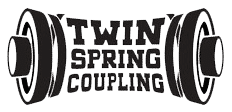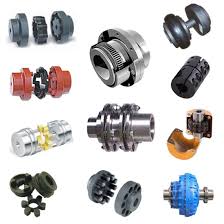Best Practices for Replacing Power Transmission Couplings in Industrial Equipment
Table of Contents
Replacing power transmission couplings in heavy industrial machinery can be challenging, but doing it efficiently can minimize downtime and extend the lifespan of your equipment.
This guide walks you through best practices for replacing couplings, focusing on reducing operational delays and ensuring your machinery runs smoothly after the replacement.
Whether you’re working with gear couplings, jaw couplings, elastomeric couplings, or grid couplings, following the correct process will save both time and money in the long run.
This article also highlights leading OEM and aftermarket coupling brands, such as Lovejoy, Rexnord, SKF, TB Woods, Dodge, Boston Gear, Belden, and Kop-Flex. We’ll focus on tips that make coupling replacement easier and offer a guide to choosing the right brand for your specific application.
1. Understand Your Coupling Type
Before you even begin replacing a power transmission coupling, it’s crucial to understand the type of coupling used in your equipment. There are several different types of couplings, each with specific applications and replacement procedures:
- Jaw Couplings: Designed for light to medium-duty applications. Common brands: Lovejoy, Rexnord, and TB Woods.
- Gear Couplings: Best for transmitting high torque at low speeds. Common brands: SKF, Rexnord, and Boston Gear.
- Elastomeric Couplings: Known for absorbing shock and vibration. Popular brands: Dodge, TB Woods, and Lovejoy.
- Grid Couplings: Provide high torque and vibration damping. Top brands: Rexnord, Kop-Flex, and Dodge.
The coupling type will impact your replacement strategy. For instance, elastomeric couplings are flexible and easy to replace, while gear couplings may require more precision and time. Knowing the specifics of your coupling type will guide you on tools and replacement techniques.
2. Preparation: Pre-Replacement Planning
Efficient coupling replacement starts with solid planning. Reducing downtime is key, especially in industrial operations where machinery delays can cost thousands. Here are steps to help you plan:
- Check for Part Availability: Ensure you have the correct replacement coupling on hand before disassembling the old one. Always have a stock of high-wear items, especially if your machinery is used continuously. Leading OEM brands like Lovejoy, Rexnord, and Dodge offer durable, long-lasting couplings that can often be purchased through local distributors or online suppliers like Amazon, Zoro, and eBay.
- Gather Tools and Supplies: Coupling replacements usually require specific tools like torque wrenches, alignment tools, and hydraulic presses. Check the manufacturer’s recommendations for any special equipment. Major aftermarket coupling brands, such as Fenner Drives and Browning, often offer tool kits that work specifically with their couplings.
- Plan Around Downtime: Schedule coupling replacements during planned maintenance windows or slow operational periods. Communicate with your team to ensure the process is as smooth as possible.
3. Safety First: Lockout/Tagout (LOTO) Procedures
Before any maintenance is performed on industrial equipment, including coupling replacement, it’s essential to follow proper Lockout/Tagout (LOTO) procedures to ensure worker safety. LOTO procedures prevent machinery from being accidentally energized while maintenance is ongoing, protecting workers from injury.
- Step 1: Disconnect Power: Physically isolate and lock out the energy source to the machinery. This step is vital for preventing accidental startups during the replacement process.
- Step 2: Use Safety Locks: Apply locks to all energy sources. Tags should also be placed to inform other workers that maintenance is ongoing.
- Step 3: Test for Zero Energy: After isolating power, always test the equipment to confirm it’s not energized.
Following these steps ensures a safe working environment for anyone performing the coupling replacement.
4. Removing the Old Coupling
Now that the equipment is powered down and the workspace is prepared, you can remove the old coupling. The removal process depends on the type of coupling:
- Jaw Couplings: Jaw couplings typically have three main components—two metal hubs and a flexible spider insert. To replace the coupling, remove the hubs from the shaft, clean any debris or damage, and remove the worn spider.
- Gear Couplings: For gear couplings, dismantling is more involved. Start by removing the coupling guard. Loosen the bolts or screws that connect the gear hub to the shaft. Be mindful of any keyways or set screws that may also need removal.
- Grid Couplings: Similar to gear couplings, grid couplings involve multiple parts. Remove the cover and grid, and then carefully disengage the hub from the shaft.
During the removal process, inspect both the coupling and the shafts for signs of damage. If the shafts are worn or out of alignment, simply replacing the coupling won’t solve the problem. Realigning or repairing the shaft may be necessary before proceeding with the new coupling installation.
5. Aligning the Shafts
Proper alignment is critical when replacing any coupling, as misaligned shafts can lead to premature coupling failure, equipment wear, and even catastrophic damage to the machinery. Misalignment is one of the top reasons couplings fail.
- Angular Misalignment: Occurs when the shafts are not parallel. This can cause uneven wear on the coupling and connected equipment.
- Parallel Misalignment: Happens when the shafts are not aligned horizontally or vertically. This can lead to excessive vibration.
To ensure accurate alignment, use an alignment tool. Many coupling manufacturers offer specialized tools to assist with the process. For example, SKF and Rexnord provide easy-to-use laser alignment tools that improve precision.
6. Installing the New Coupling
Once the shafts are aligned, it’s time to install the new coupling. Ensure that you follow the manufacturer’s guidelines for installation:
- Lubrication: Some couplings, such as gear couplings, require lubrication to reduce friction and wear. Make sure to use the correct type of lubricant as recommended by the manufacturer.
- Bolting: Tighten the bolts or set screws to the manufacturer’s recommended torque levels. Over-tightening can lead to metal fatigue, while under-tightening can cause the coupling to slip.
- Assembly: Carefully assemble the coupling components, ensuring all parts are seated correctly. For couplings that use elastomeric materials (e.g., Lovejoy or Dodge elastomeric couplings), ensure the rubber or plastic elements are properly aligned and not twisted or deformed.
7. Testing the Coupling
Once the new coupling is in place, it’s time to test the installation. Before restarting the machinery:
- Manual Rotation: Rotate the shafts manually to check for any binding or misalignment.
- Initial Startup: Power up the equipment and monitor for any unusual vibrations or noises. If the machinery vibrates excessively, shut it down immediately to recheck the alignment and installation.
- Post-Replacement Monitoring: After replacing the coupling, it’s a good idea to monitor the equipment during its first few hours of operation. Look for any signs of wear or misalignment, and listen for unusual noises that could indicate a problem.
8. Selecting the Right Coupling Brand
Choosing a high-quality coupling brand will improve the longevity of your machinery and reduce the frequency of replacements. Here’s a breakdown of some top OEM and aftermarket brands:
- Lovejoy: Known for its reliability in jaw and elastomeric couplings. Lovejoy products are ideal for light to medium-duty applications in various industries.
- Rexnord: Specializes in high-torque gear and grid couplings, suitable for heavy-duty industrial applications. Rexnord is a top choice for harsh environments and high-stress conditions.
SKF: Offers a wide range of power transmission products, including gear couplings and flexible couplings, with a focus on durability and performance.
- Dodge: Renowned for elastomeric couplings that provide excellent shock absorption and vibration damping, making them ideal for applications involving high loads and dynamic forces.
- Boston Gear: Offers high-performance couplings for precision applications. Their gear couplings are widely used in heavy-duty industrial equipment.
- Kop-Flex: A leader in grid couplings and high-performance power transmission products, particularly in demanding industrial environments like mining and oil & gas.
9. Maintenance Tips to Extend Coupling Life
To get the most out of your power transmission couplings, regular maintenance is key:
- Regular Inspections: Periodically check the couplings for signs of wear, misalignment, or lubrication issues. Even slight misalignment can lead to premature wear.
- Proper Lubrication: Gear and grid couplings require consistent lubrication to function properly. Be sure to use the right type of lubricant, and replace it as needed based on operational conditions.
- Vibration Monitoring: Excessive vibration can indicate misalignment or imbalance. Install vibration sensors on key equipment to catch issues before they cause failures.
Best Practices for Replacing Power Transmission Couplings in Industrial Equipment
Conclusion
Replacing power transmission couplings doesn’t have to be a daunting task. By understanding the type of coupling, preparing properly, ensuring alignment, and following the manufacturer’s guidelines, you can significantly reduce downtime and extend the lifespan of your equipment. Investing in high-quality couplings from brands like Lovejoy, Rexnord, SKF, and Dodge will also pay off in the long run by reducing the frequency of replacements.
If you’re ready to upgrade or replace your industrial couplings, explore our extensive inventory of OEM and aftermarket couplings. Contact us today for expert advice on choosing the right coupling for your specific application and take the first step towards improving your equipment’s efficiency.
Call to Action
Looking for high-quality replacement couplings for your industrial equipment? Check out our selection of top OEM and aftermarket brands today! We carry an extensive range of couplings from trusted manufacturers like Lovejoy, Rexnord, SKF, Dodge, and many more. Don’t let a worn-out coupling bring your operations to a halt—get the best products, backed by our expert support team, to keep your machinery running smoothly. Contact us now to find the perfect coupling solution for your business or browse our collection for quick and easy replacements!
Key Takeaways
- Plan Ahead: Ensure you have the right parts and tools in stock to minimize downtime.
- Safety First: Always follow proper safety protocols, including Lockout/Tagout (LOTO) procedures, to protect your team.
- Alignment Matters: Misaligned shafts are one of the main causes of coupling failure, so use alignment tools to ensure precise installation.
- Choose Quality Brands: Opt for reliable coupling brands like Lovejoy, Rexnord, SKF, Dodge, and Kop-Flex for longer-lasting performance.
- Routine Maintenance: Regular inspections, lubrication, and vibration monitoring can extend the life of your couplings and prevent costly failures.
By following these best practices and investing in high-quality couplings, you’ll reduce maintenance costs, minimize downtime, and keep your industrial operations running at peak efficiency.
Need Help?
If you’re unsure about which coupling is right for your application, reach out to our technical team for personalized assistance. We’re here to help you find the perfect match for your equipment needs.

